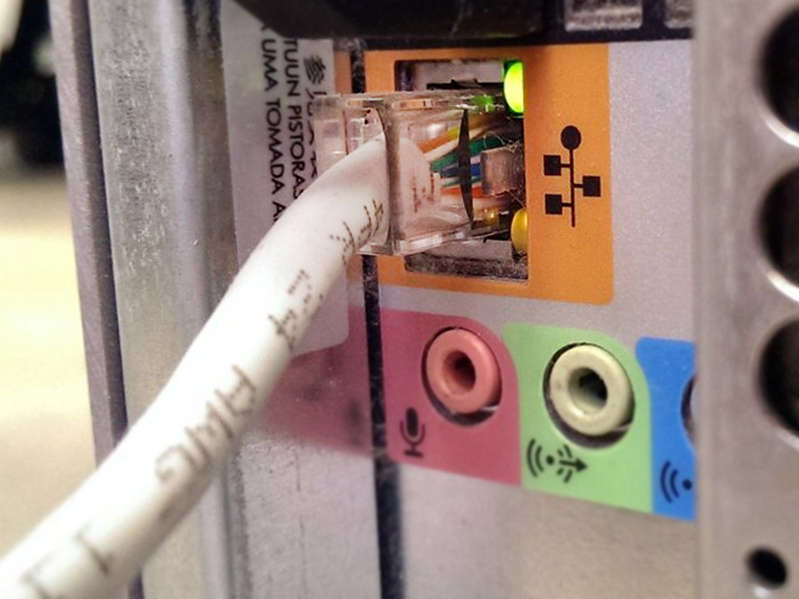
“In the beginning was the ARPANET”: who created the modern Internet?
It is hardly possible to imagine the modern world without the Internet and mobile phones. The luxury of the current average inhabitant of the Earth consists in communication that has no boundaries, as well as in access to almost any information. You only need to make a few movements on the smartphone screen and this will help you resolve an argument or satisfy curiosity.
With the incessant development of the World Wide Web, new professions and specialties have come to the world, which can also be mastered without leaving home. The Internet as it exists today is due to Tim Berners-Lee. It was he who first embodied hyperlinks into reality and turned the linear network into a spider web. Exactly 30 years ago, on August 6, 1991, Tim Berners-Lee hosted the world's first website on the first web server.
ARPANET: The Internet Before the World Wide Web
In the modern sense, the word “Internet” is often used in the meaning of the “World Wide Web”, but there is a difference between them. The history of the Internet dates back to the 1960s, when, by order of the US Department of Defense, a system for transmitting information in cases of war, ARPANET, was developed. The impetus for the creation of such a network can be considered the Cold War – in October 1957, the USSR launched the first satellite, which causes shock in the scientific and political community. The first messages via ARPANET, the progenitor of the Internet, were sent on October 29, 1969 from the University of California, Los Angeles. Messages were sent at night, after the working day, so that in the event of a computer failure, their work during the day would not be affected. The first time it was possible to send only the first three letters of one word “log” (“login”) after which the network ceased to function. When the system returned to working condition, another attempt was made, which this time was successful. The technical breakthrough took place, the network began to actively grow and develop, in several years it was able to cover the entire United States, and in 1973 the first foreign organization, the Norwegian NORSAR, was able to connect to it.
In the 1970s, the network was mainly used for email. At that time, interoperability between other networks and computers was not so easy – they were all built on different technical standards. Then Robert Elliot Kahn and Vinton Cerf developed a unified TCP / IP data transfer protocol, which is successfully used to this day. In 1988, the Internet Relay Chat (IRC) protocol was also developed, making real-time communication possible on the Internet.
Who is Tim Berners-Lee?

“In the beginning was the ARPANET”: who created the modern Internet? Photo: TASS / Steve Parsons
Before continuing the story about the development of the global network, we should mention the biography of the creator of the Internet (in the form in which we are used to seeing it). Tim's talent did not fall from the sky, both of his parents were mathematicians and worked on the creation of one of the first computers “Mark I”. Therefore, we can say that the future creator of the modern Internet from childhood grew up surrounded by computers and information systems.
Berners-Lee assembled his first computer while studying at King's College Oxford. There, he and his friend were caught during a hacker attack, for which they were deprived of the opportunity to use university computers. Anyway, he graduated from the university with honors, received a specialization in Physics and went to work for Plessey Telecommunications Ltd, where he was engaged in distributed transaction systems. Tim later moved to DG Nash Ltd. There he worked with printer software and the creation of similar multitasking operating systems.
Perhaps Berners-Lee would never have shown his talent if it had not been for the CERN nuclear research laboratory. There he was a software consultant, along the way creating the Enquire document system, on the basis of which the global hypertext project – the World Wide Web was formed. It was the creation of the WWW that gave a great impetus to the development of the Internet.
Technical revolution: what was the World Wide Web created for?

“In the beginning was the ARPANET”: who created the modern Internet?
If the Internet itself was created by the American military during the Cold War precisely as a network capable of surviving even a nuclear war, then why was the World Wide Web invented?
Tim Berners-Lee has created web pages with links that can be opened with browsers. From each page, an Internet user can go to another, and so on ad infinitum, which as a result forms connections – a kind of invisible web.
Of course, Berners-Lee hardly expected that he would be able to create something, thanks to which new professions would appear, and a modern person would no longer be able to imagine life. Tim was simply creating a system for the internal needs of CERN, to simplify the storage and organization of information. Tim Berners-Lee invented URIs (URLs), HHTTP, and HTML.
On November 12, 1990, Tim Berners-Lee and Robert Kayo officially presented the project to the CERN leadership, for the first time calling their development the World Wide Web. The first website in the world created by Berners-Lee was http://info.cern.ch. Today it is in the archive, but 29 years ago it contained information about the World Wide Web, instructions for installing a web server and using a browser. Later, the site was also the world's first Internet directory where Tim Berners-Lee posted and maintained a list of links to other sites.
Already in December 1990, the first site was launched on the CERN intranet, and ARPANET ceased to exist, unable to withstand competition from all sides. On August 6, 1991, the World Wide Web became available to all Internet users, and two years later, the famous Mosaic web browser appeared, thanks to which the Internet gained popularity among the general public around the world. Since 1994, the main work on the development of the World Wide Web has been carried out by the World Wide Web Consortium, which was founded (and still led) by Tim Berners-Lee.
The number of Internet users in the world is growing relentlessly. The number has grown to 4.54 billion to date, according to a Digital 2020 report produced by We Are Social and Hootsuite. In addition, in Russia the number of Internet users was 118 million, which means that the global network is used by 81% of Russians.

